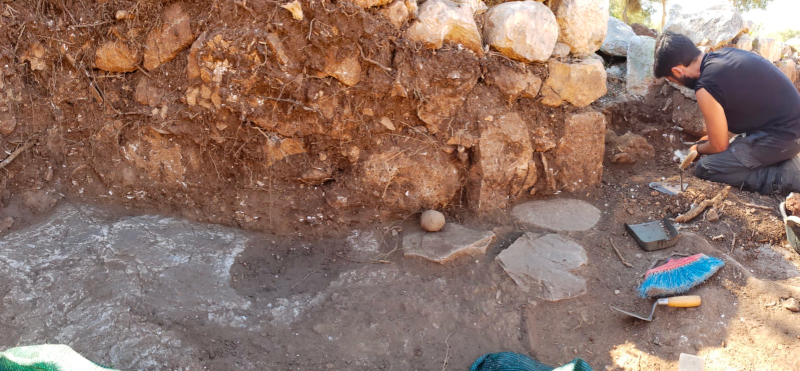Thanks to the ASOR Scholarship for Fieldwork Participation, I was able to join the Menorca Archaeology Project (MAP) in Spain to excavate a portion of the medieval settlement at the site of Torre d’en Galmés. This rural 13th century Islamic village, or alqueria, is built atop and abutting (and certainly borrowing from) the ruins of a large post-Talayotic (Iron Age) settlement, and by studying it we can better understanding what life was like during this period and how medieval lifeways have influenced later periods of life on Menorca.
I am the archaeobotanist on the team, meaning I study plant remains like wood charcoal, seeds, and plant parts. The analysis of these remains can help us answer questions about diet and foodways, the crops that people grew and the wild plants they collected, and the types of plant materials they used to build their houses and fuel their fires.
This season, our excavation focused on two houses, one of which was so well-preserved that the plaster on the interior walls and floor were still intact. These houses were built in the typical form of Muslim houses – multiple rooms formed an L that bordered 2 sides of a patio, which was enclosed by 2 other walls to create a private area for the family to relax and perform everyday tasks such as cooking and carding wool to make yarn. The room that was excavated we are interpreting to be a kitchen, based on the presence of hearths, grinding stones, cooking vessels, as well as parallels in construction to other excavated houses of this era. We also found bronze nails just inside the threshold, hinting at the wooden door that would have graced this entryway.



